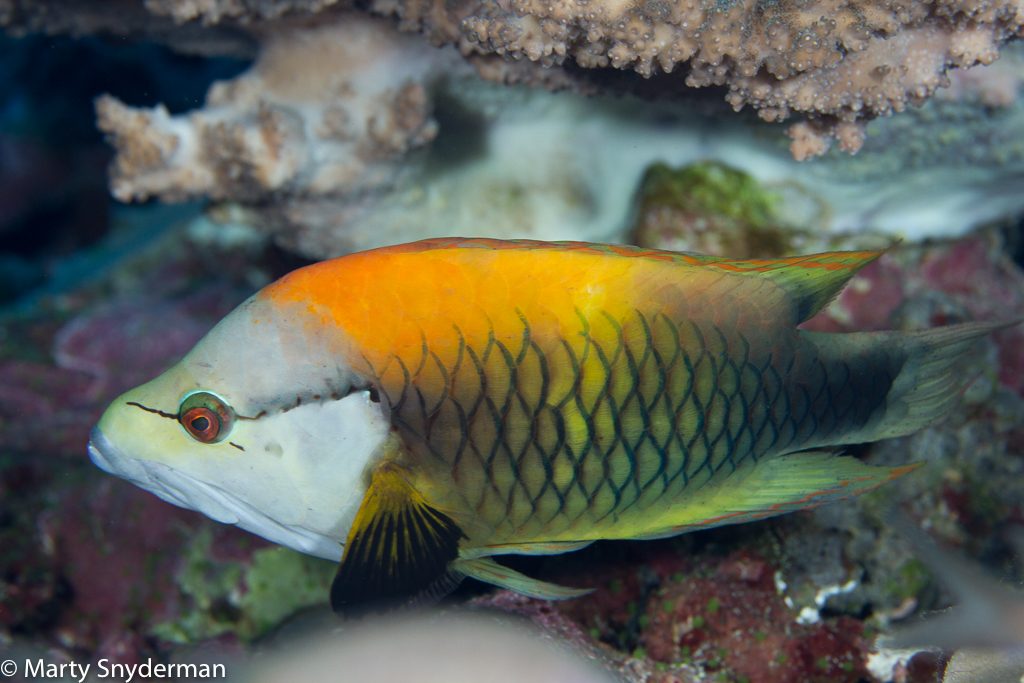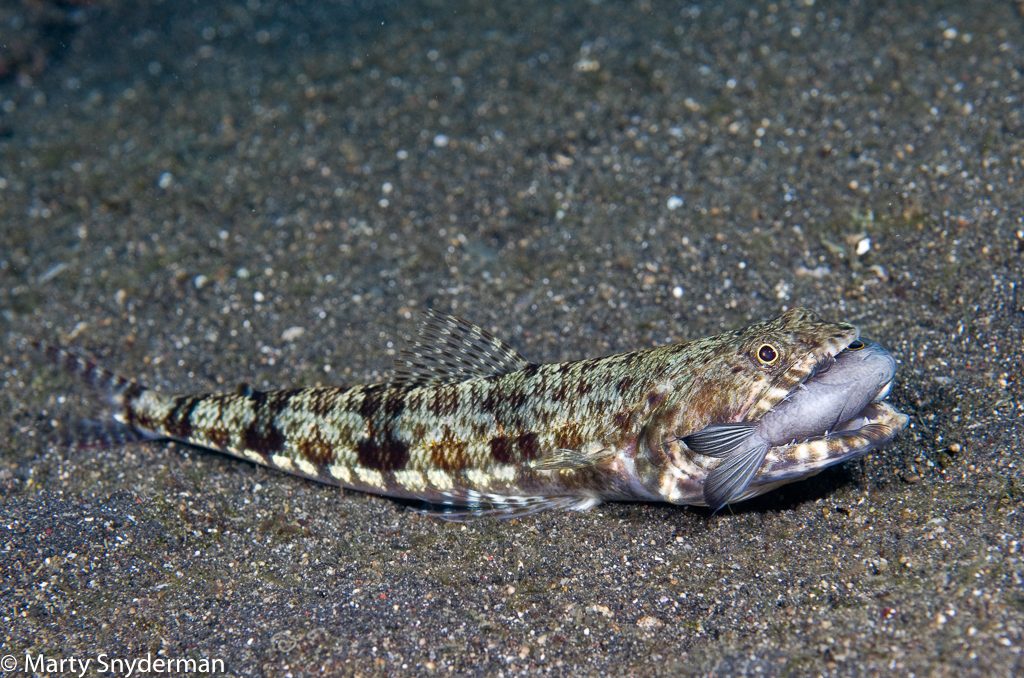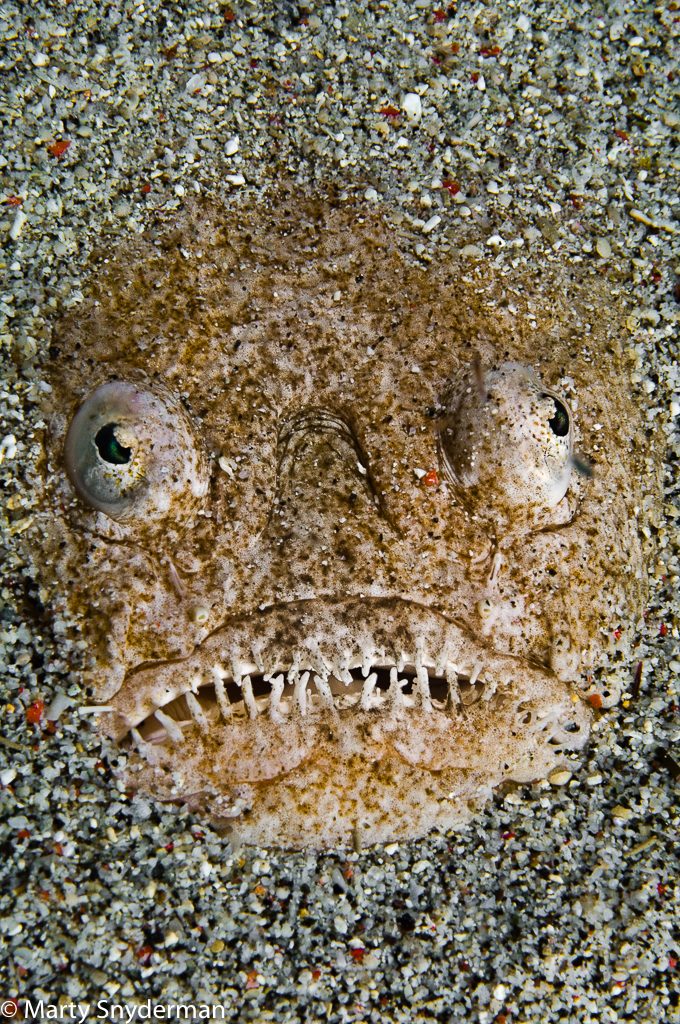Fast Food Fishes
Fast Food Fishes
© Text and photography by Marty Snyderman
Fishes use a wide variety of strategies to acquire their food. Most of us are familiar with the strike hard and overwhelm your prey strategy that is often employed by carnivorous apex predators such as great white sharks and marauding schools of tunas, jacks and billfishes. Other fishes rely more on their ability to blend in with their surroundings and ambush unsuspecting prey before their prey knows what hit them. Many species are planktivores, animals that pluck planktonic species out of the water column. Grazing on a variety of algae, other fishes are herbivores, while still others are omnivores, species that readily feed on both plants and animals. Still others rely on deceit to trick their prey.
Examining some of the adaptations that enable various fishes to capture their food reveals a fascinating look into Mother Nature’s seemingly endless bag of tricks. In this piece we will reveal the feeding strategies of the slingjaw wrasse, lizardfishes and stargazers to illustrate some adaptations that make the world of fishes so fascinating.
Slingjaw Wrasse
The slingjaw wrasse, Epibulus insidiator, occurs in the Pacific Ocean from southern Japan to New Caledonia, in Hawaii, the Tuamotos, and the Indian Ocean from the Red Sea to South Africa. The species prefers well-developed coral reef communities and lagoons where corals are thriving. Slingjaw wrasse can be seen from just below the surface to a depth of 130 feet.
Attaining a maximum length of approximately 14 inches (35 cm), the slingjaw wrasse occurs in several color phases. The bodies of juveniles are brown with narrow white bars. As the fish age, their color varies from brownish hues to neon yellow. Terminal phase males display a dark body, orange to yellowback, and a white head with a black line through the eye.

If you spot a Slingjaw wrasse it is often worthwhile to follow and watch the fish for a few minutes. If it is feeding as they often are during the day, you just might see the fish “unfold” and extend its mouth forward as far as almost half of the fish’s body length in an act that often makes first timers question their “lying eyes”. The jaw functions like a straw as it creates suction. Sometimes the jaw is slowly extended almost as if the fish is taking aim, but more often the action takes place in the blink of an eye. The main prey of slingjaws consists of a variety of crustaceans and small bony fishes.
Lizardfishes
The approximately 70 species of long, slender-bodied, cigar-shaped fishes commonly known as lizardfishes are rather distinctive looking creatures. The common name lizardfish certainly seems apropos as these fishes bear the strong resemblance to the land-dwelling reptiles we know as lizards especially when these fishes are resting on the sea floor while propping themselves up on their pelvic and pectoral fins.

With diets comprised mostly of a variety of small fishes, lizardfishes are voracious carnivores. They also readily prey upon squids, shrimps, and other small invertebrates. When hunting, lizardfishes often bury themselves in the sand or mud with only their eyes exposed. This position enables them to be mostly hidden while waiting to ambush prey. When a prey item passes by, a lizardfish will “launch itself” out of the sand using its tail to rapidly propel its body toward the intended prey. Their razor sharp teeth and armed tongue assist them in grabbing and holding their victim. The entire ambush and capture take place in a fraction of a second, but it often takes a lizardfish quite a while to swallow its prey once it has been subdued.
Sometimes lizardfishes hunt with their body exposed simply by perching themselves upon their fins on a prominent rock outcropping or coral head while they remain still as can be. When an unsuspecting victim comes within striking distance the attacker launches its lightening-fast attack.
Stargazers
Worldwide there are approximately 50 species of fishes described in the family Uranoscopidae. Collectively speaking, the common name for these fishes is stargazers. Stargazers have an upward facing mouth and often bury themselves “up to their eyeballs” in the sand so that all you see is their eyes, the top of their head and the outline of their mouth.
This positioning and the fact that their eyes are located high atop their heads makes stargazers appear as if they are staring toward the heavens, hence their common name.
When feeding stargazers “leap up” or “explode” from their buried position to ambush their unsuspecting prey which consists of a mixture of fishes and invertebrates that pass overhead, but close enough to become a meal. In addition, some species of stargazers are equipped with a lure that grows from the bottom of their mouth. The lure is used to attract prey.

